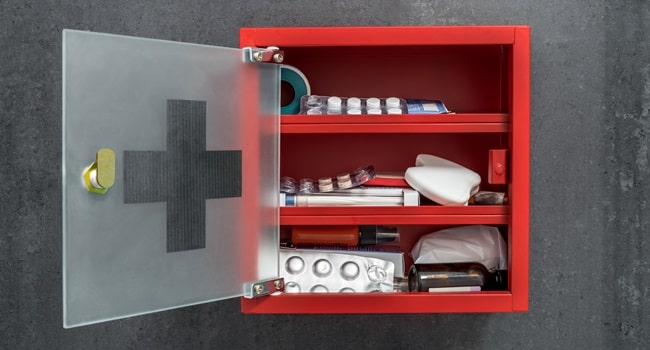Technically, any part of the house that allows a person to sit and lie down comfortably can be considered a “recovery room.” But that doesn’t stop people from building a dedicated one to help them or their loved ones recuperate from a disease or an injury. For them, a normal living space just isn’t up to the task.
Unless strongly advised by the attending doctor, a recovery room at home doesn’t require investing in expensive medical equipment. Your typical furniture and perhaps a great view of the outside world can go a long way in making anyone fit as a fiddle again. Here’s a look into the stuff your recovery room needs to do its job.
Sofa Bed
Sickness may leave anyone bedridden, but that isn’t exactly an excuse not to get up from time to time. Multiple studies have proven that excess bed rest leads to an assortment of complications. You may be familiar with side effects like muscle atrophy and bedsores (also called pressure ulcers), but more dangerous ones include:
- Change in cholesteryl ester levels, which is linked to cardiovascular disease (1)
- Orthostatic intolerance, feeling symptoms that can be relieved by lying down (2)
- Increased blood sugar, even when adhering to a well-rounded diet (3)
It’s easy to think that the solution is to have a comfy bed and sofa in the recovery room, but that raises the issue of ensuring ample space. A cramped recovery room won’t do anyone favors, especially those in casts or wheelchairs.
Sofa beds found at ecosa.com.au/sofa-beds or similar platforms solve this problem by being sofas or beds on request. They may look like any regular sofa, but beneath is a mechanism that can deploy a mattress for sleeping. When not in use, the bed can be tucked away to conserve space for other essential equipment.
Such versatility makes them suitable for existing quarters repurposed as recovery rooms, which typically have limited space. Moreover, sofa beds are budget-friendly alternatives not only for buying sofas and beds but also for renovation for room expansion.
And for maximum comfort, sofa beds can be paired with cushions and pillows of varying firmness based on preference. A firm pillow works for bedtime, whereas a soft cushion is ideal for sitting. You won’t need to look far as online stores offering affordable sofa beds like ecosa.com.au also sell cushions and pillows.
Medicine Cabinet
Having a fully stocked medicine cabinet or kit within reach can be handy. As such, it’s only sensible for a recovery room to have one with as many medical essentials as it can fit. As a matter of fact, having one benefits the entire house.
Besides prescription medicine, the cabinet should at least contain the following: (4)
|
Type of Medication |
Recommended To Have on Hand |
|
Non-steroidal anti-inflammatory pain relievers (NSAIDs) |
Aspirin |
|
Ibuprofen |
|
|
Naproxen sodium |
|
|
Non-NSAID pain relievers |
Acetaminophen |
|
Topical pain relievers |
Medicated pain patches |
|
Medicated creams or gels |
|
|
Respiratory medicines |
Cough suppressant |
|
Expectorant |
|
|
Cough drop/spray |
|
|
Decongestant |
|
|
Antihistamines |
Cetirizine |
|
Desloratadine |
|
|
Fexofenadine |
|
|
Loratadine |
|
|
Gastrointestinal medicines |
Antacids |
|
Proton pump inhibitors |
|
|
Loperamide |
|
|
Polyethylene glycol |
|
|
Bismuth subsalicylate |
|
|
Skin treatments |
Hydrocortisone |
|
Diphenhydramine |
|
|
Injury aids |
Adhesive bandages |
|
Liquid bandages |
|
|
Alcohol wipes |
While these medical supplies can be stored in any standard cabinet, medical cabinets are designed with security in mind. Most of the medications on the list can be easily misused or abused, which leads to drug dependence. As such, medical cabinets often come with a lock and key and are placed out of children’s reach to mitigate this risk.
To preserve the medicines’ potency, experts advise keeping the recovery room “cool and dry.” The ideal temperature can vary by medicine, but according to the US Pharmacopeia, most medications can be preserved in temperatures from 68 to 77°F. Meanwhile, relative humidity shouldn’t exceed 40% at 68°F. (5)
Maintaining proper storage conditions for your medicines shouldn’t be a problem as long as your HVAC system is working as intended. That said, try to avoid setting the thermostat beyond the temperature range.

Windows
A recovery room that doesn’t take advantage of a great view of the house’s surroundings would be a missed opportunity. Not only would it miss the chance to enjoy the view while recovering, but it would also miss out on letting natural light in.
Researchers have recently been intrigued by the role natural light and panoramic nature views play in patient recovery. In 2022, a study of roughly 4,000 surgery patients revealed that patients in rooms with windows had a lower mortality rate than those in windowless rooms. In a different study, a view of nature is associated with decreased stress. (6)
A year later, researchers at Clemson University found that natural light and nature views helped reduce a cardiac patient’s stay in the ICU by 16.8 to 24 hours. The numbers might not look much, but a day less in the ICU accounts for significant cost savings. (7)
While correlation doesn’t always imply causation, a view of the outside world is still a nice thing to have for the recovery room. If your area isn’t near any patch of virgin flora and fauna, your front or backyard garden is another option.
Conclusion
With the right design and essentials, a recovery room at home can make a difference in helping one’s recuperation. Medications are only one part of the recovery process; the immediate environment must also be conducive for the patient.
References:
- Lamontagne ND. Bedrest may affect cholesterol dynamics differently depending on age [Internet]. @ASBMB. 2024 [cited 2025 Feb 6]. Available from: https://www.asbmb.org/asbmb-today/science/032424/bedrest-may-affect-cholesterol-dynamics
- Blaber AP, Sadeghian F, Donya Naz Divsalar, Scarisbrick IA. Elevated biomarkers of neural injury in older adults following head-down bed rest: links to cardio-postural deconditioning with spaceflight and aging. Frontiers in human neuroscience. 2023 Sep 26;17. Available from: https://www.frontiersin.org/journals/human-neuroscience/articles/10.3389/fnhum.2023.1208273/full
- Trim W, Jean–Philippe Walhin, Françoise Koumanov, Turner J, Shur NF, Simpson L, et al. The impact of physical inactivity on glucose homeostasis when diet is adjusted to maintain energy balance in healthy, young males. Clinical Nutrition. 2023 Apr 1;42(4):532–40. Available from: https://www.sciencedirect.com/science/article/pii/S0261561423000365
- Clinic C. What To Keep in Your Medicine Cabinet [Internet]. Cleveland Clinic. 2023 [cited 2025 Feb 6]. Available from: https://health.clevelandclinic.org/heres-what-to-keep-in-your-medicine-cabinet-in-case-you-get-sick
- Excerpted USP-NF Standards Referenced in the USP COVID-19 Vaccine Handling Toolkit [Internet]. Available from: https://www.usp.org/sites/default/files/usp/document/our-impact/covid-19/uspnf-standards-vaccine-handling.pdf
- Recovering From Surgery? Get a Hospital Room With a View [Internet]. Verywell Health. Available from: https://www.verywellhealth.com/hospital-room-might-affect-recovery-after-surgery-7089838
- Bates B. Can daylight help the heart heal? Clemson researchers find link between daylight, window views and recovery time for cardiac patients [Internet]. Clemson News. 2023. Available from: https://news.clemson.edu/can-daylight-help-the-heart-heal-clemson-researchers-find-link-between-daylight-window-views-and-recovery-time-for-cardiac-patients/
















